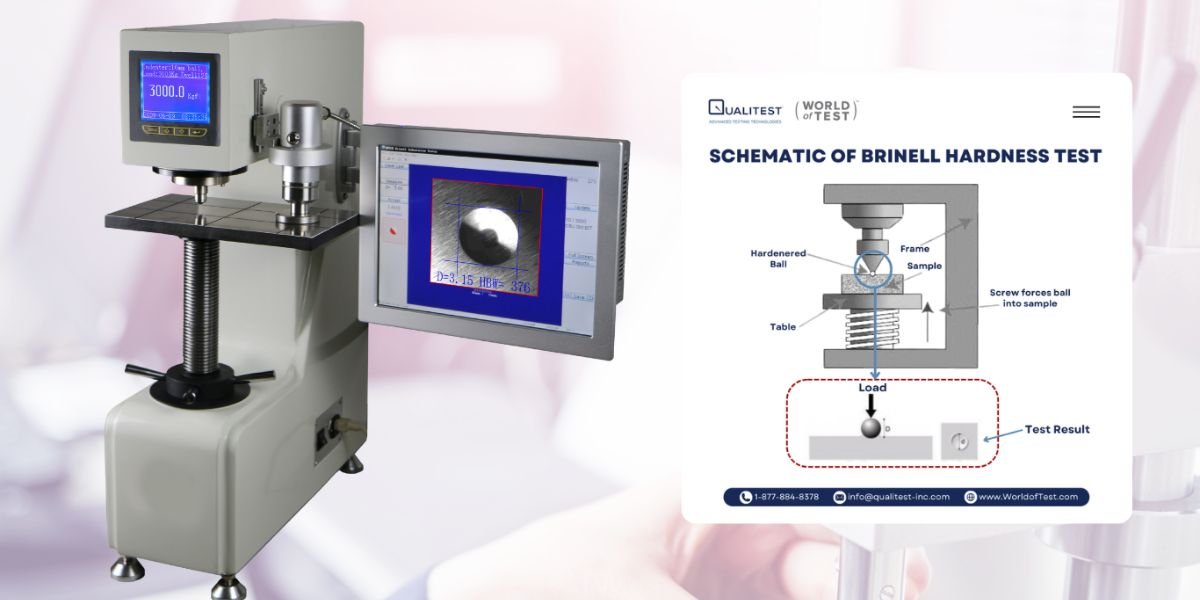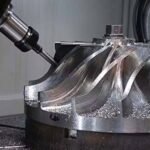Brinell Hardness Testing is one of the most trusted methods for evaluating the hardness of metals, especially those with rough surfaces or coarse grain structures. From castings to forgings, this test reveals how resistant a material is to indentation under load. Whether you’re selecting materials or ensuring quality in production, understanding Brinell testing helps you make informed, reliable decisions.
But how does this method work? Why is it preferred in many industrial applications? And how does it compare to other techniques like Rockwell testing? Let’s break it down.
How Brinell Hardness Testing Works
The Brinell method applies a heavy, consistent load to a tungsten carbide ball pressed against the material for a defined period, usually between 10 and 30 seconds. The ball diameter is commonly 10 mm, and the load ranges from 500 kgf to 3000 kgf, depending on the material type.
Once the load is removed, an indentation is left behind. This impression is measured across two perpendicular diameters using an optical device or microscope. The average of these values is used in a mathematical formula to determine the Brinell Hardness Number (BHN).
The standard formula:
HB = 2F / (πD(D – √(D² – d²)))
Where:
- F = applied load (in kgf)
- D = diameter of the ball (mm)
- d = average diameter of the indentation (mm)
While this equation may seem technical, most professionals rely on tables or software integrated with a Brinell Hardness Tester to calculate the BHN automatically.
Brinell vs Rockwell: What’s the Difference?
Both Brinell and Rockwell are popular hardness tests, but they serve different needs:
Brinell Test:
- Uses a large ball indenter (up to 10 mm)
- Ideal for rough or heterogeneous materials like cast iron and forged steel
- Measures the diameter of the indentation
- Requires optical reading, which can introduce subjectivity
- Often used for larger samples or softer materials
Rockwell Test:
- Employs smaller steel balls or diamond cones
- Suitable for fine-grained, smooth samples
- Measures depth of indentation, not diameter
- Provides faster, more automated results
- More appropriate for thin materials or surface-hardened metals
While Rockwell is quicker and less operator-dependent, Brinell offers more representative results over a large surface area, making it invaluable in many industrial scenarios.
How Accurate is the Brinell Hardness Test?
Brinell testing is accurate when performed correctly, but several variables can affect its precision:
- Surface preparation is critical. Rough or unclean surfaces can distort readings.
- Optical measurement can vary between operators, leading to inconsistent results.
- Ball wear or deformation from repeated use on hard materials can skew results.
To address these challenges, modern systems now include automatic optical analysis, which eliminates human error in reading indentations. If you’re looking for consistency and repeatability, investing in an advanced Brinell Hardness Tester with digital imaging capabilities is a smart move.
Additionally, adherence to standards such as ASTM E10 and ISO 6506 ensures that test conditions are uniform across labs and industries.
What is the Brinell Hardness Level?
Brinell Hardness is expressed in HBW, where:
- H stands for Hardness,
- B is Brinell,
- W indicates the use of a tungsten carbide ball.
A full designation might look like 250 HBW 10/3000/15, which translates to:
- A BHN of 250
- Using a 10 mm ball
- With a 3000 kgf load
- Applied for 15 seconds
Typical Brinell Hardness Levels:
- Aluminum alloys: 25–150 HBW
- Copper alloys: 60–200 HBW
- Mild steel: 120–180 HBW
- Cast iron: 150–300 HBW
- Hardened tool steel: up to 650 HBW (though Brinell is less ideal for these)
The range is wide due to various load-ball combinations, making Brinell a flexible test method for multiple materials and applications.
Applications of Brinell Hardness Testing
Brinell testing is widely used across industries because it provides a more holistic view of material strength, especially in components with variable microstructures. Common applications include:
- Automotive: Testing engine blocks, brake rotors, and suspension parts
- Construction: Assessing steel beams, rebar, and fasteners
- Aerospace: Evaluating aluminum structural parts
- Foundries: Quality control for large castings and forged parts
The large indentation gives an average hardness value over a broader area, making it less sensitive to small inclusions or surface anomalies.
Advantages and Limitations
Advantages:
- Effective on coarse or non-uniform materials
- Wide range of ball sizes and loads for different hardness levels
- Useful for large or irregular shapes
- Simple method with standardized procedures
Limitations:
- Slower than Rockwell or Vickers
- Requires surface prep and good lighting for reading
- Not suitable for very thin or very hard materials
- Manual optical readings can introduce variation
Despite these downsides, Brinell testing remains a gold standard where depth and accuracy over a larger area are needed.
Tips for Better Brinell Testing
If you’re aiming for high repeatability and minimal operator error, follow these tips:
- Always polish the test surface before applying the load.
- Use calibrated equipment and inspect indenter balls regularly.
- If possible, opt for a tester with automated image analysis.
- Match your ball diameter and load to maintain the standard L/D² ratio.
A well-maintained and properly used Brinell Hardness Tester can deliver accurate and consistent results for years.
Final Thoughts
Brinell Hardness Testing may not be the fastest method, but its reliability and adaptability make it indispensable, especially for industries dealing with large components, rough surfaces, or inconsistent microstructures.
Understanding its principles, limitations, and best-use scenarios ensures better material selection and fewer production errors. With advancements in automation and digital optics, Brinell testing has become more accurate and user-friendly than ever.
For quality control teams, engineers, and metallurgists, the Brinell method continues to be a solid, time-tested choice for hardness measurement.














